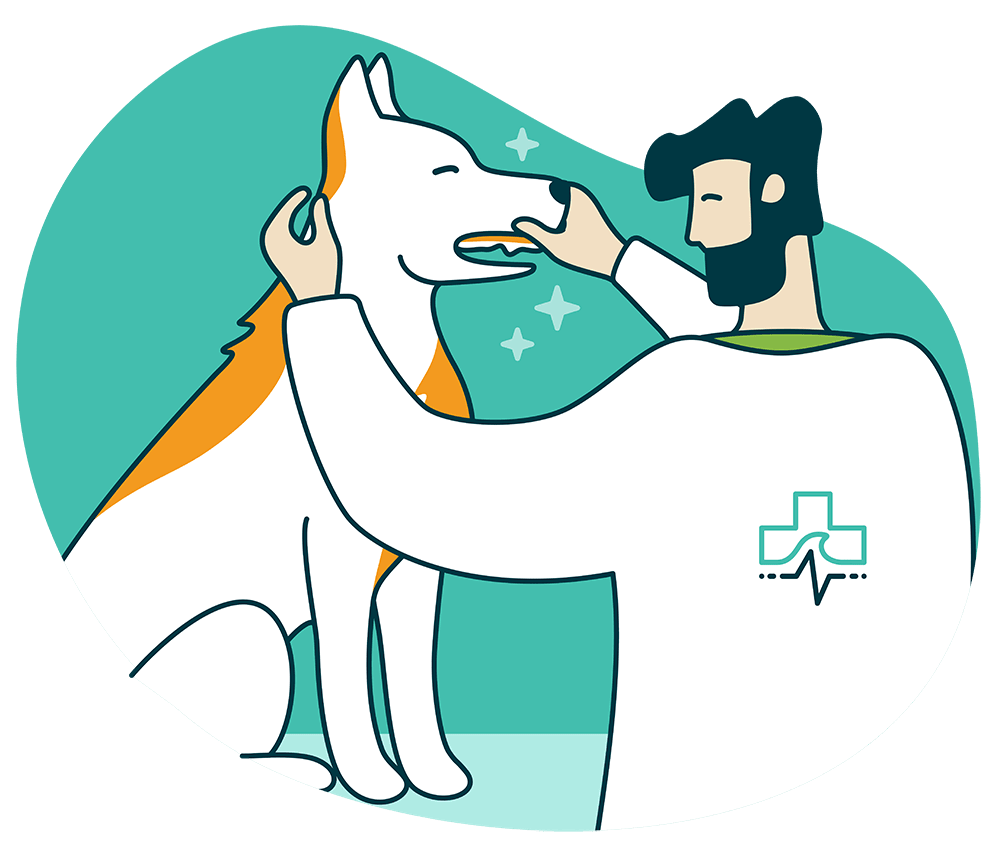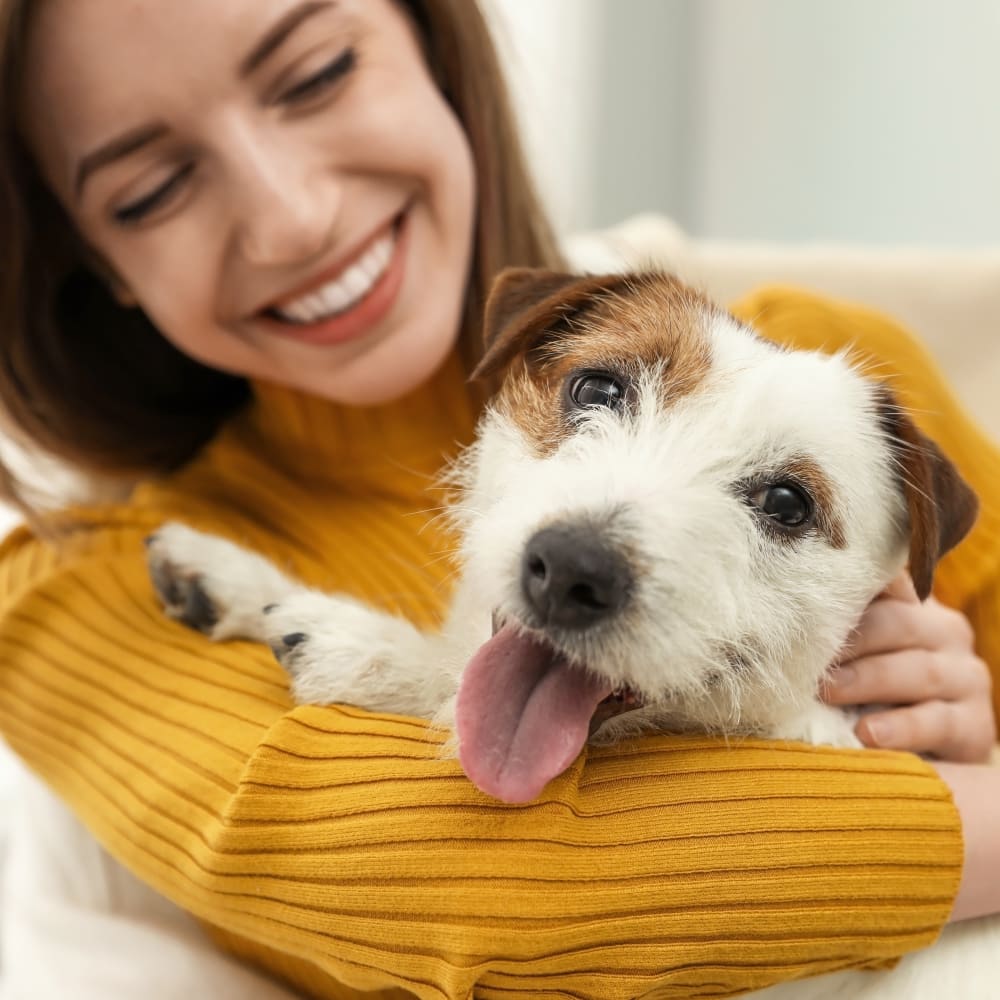Veterinary Dentistry
Our team at Coastal Care Veterinary Emergency & Referral Hospital looks forward to providing dental and oral healthcare services for your pet for a healthy mouth and optimal oral health.


Dentistry & Oral Surgical Procedures
Examples of the services we offer (each including an oral examination) are:
- Periodontics (treatment of gingivitis, gum recession and bone loss around the teeth)
- Prosthodontics and Restoratives (eg, application of metal crowns and filling tooth defects)
- Endodontics (eg, root canal treatment and vital pulp treatment)
- Orthodontics (eg, alleviate traumatic bites)
- Oral Surgery (eg, extractions, biopsies, tumour excision)
- Traumatic Injuries (eg, fracture repair)
- Biopsy and Surgery for Oral Tumours
Please Note: Specialty services require a referral from a primary care veterinarian.
Board-Certified Veterinary Dentistry Specialist
A veterinary dentistry specialist is a veterinarian who has completed advanced residency training in the field of veterinary dentistry and oral surgery. These veterinarians are board-certified by the American Veterinary Dental College (AVDC) and have completed advanced training beyond their Doctor of Veterinary Medicine (DVM) degree.
Dental Diseases in Dogs & Cats
Periodontal disease is inflammation and infection of the structures supporting and surrounding the teeth, including the gum tissue, periodontal ligament and supporting bone. Periodontal disease is considered the most common disease process in dogs and cats, causes pain and discomfort and can lead to tooth loss. Often, it is misdiagnosed or missed entirely due to the difficulties of conducting a thorough oral health exam on a conscious patient.
Research shows that by the age of 2-3 years, many dogs and cats will have developed some form of oral disease. Studies also show that clinically important oral findings, which often require treatment, will be missed 28-42% of the time without dental X-rays. Anesthesia is required for dental X-rays to be taken in dogs and cats, and an anesthetized comprehensive oral health assessment and treatment allow for a complete examination of the mouth and teeth and thorough professional dental cleaning.
Large breed dogs are typically less prone to periodontal disease than their small breed counterparts or cats, but are frequently affected by other oral conditions such as broken teeth or endodontic (inside the tooth) infections. Anesthetized exams also allow for the early diagnosis of oral tumours, which are much more likely to be successfully treated if caught while they’re small.
We look forward to helping you establish a routine that ensures a healthy, pain-free mouth for your pet.
Specialized Dentistry FAQs
-
What happens at your pet’s oral health referral appointment?
Typically, prior to the oral referral consultation, the dental department would have received your pet’s health summary from your family veterinarian. The veterinary dental specialist will review the information provided along with the results of any relevant diagnostic tests. A dentistry team member would have also sent you a pre-consultation questionnaire to complete and return - well in advance of your appointment.
During the consultation, we will review and confirm the information we have received to avoid any misinterpretation. The veterinary dental specialist will then perform what we refer to as an “awake or conscious” examination of your pet. This examination is necessary in order to obtain an overview of your pet’s oral health and to verify the reason for the referral.
Questions are asked and answered from both sides. The veterinary dental specialist will then provide a written summary of the consultation along with an estimate for any recommended services and/or procedures. You do not need to feel obligated to schedule anything at the initial consultation unless you are ready to do so. You may have additional questions once you return home and have had a chance to digest the consultation summary and recommendations. We will advise on the best way to contact us for further information should you require it.
Our goal is to provide as much information as you require to enable you to make an informed decision regarding your pet’s oral health.
-
Do you offer surgical procedures?
There are many procedures available through our dentistry department. As it happens, most dental procedures require some form of surgery. Unfortunately, it is a rare occurrence when the pets we see require a simple dental cleaning (prophylaxis). This is because, typically, if you have been referred to us, it is because there is already an existing oral health problem of some sort.
-
Do you treat endodontic or pulp disease in pets?
Yes. Endodontic disease refers to conditions affecting the pulp (the blood and nerve supply inside the tooth). Common examples in dogs and cats include broken teeth and teeth that are dead or non-vital. Root canal treatment is an endodontic treatment that is among the most common procedures performed in veterinary dentistry.
-
How do you diagnose dental disease?
The first step to diagnosing oral and dental diseases in dogs and cats is an awake oral exam. Often we will be able to identify common oral conditions such as periodontal disease, broken teeth and oral tumours on awake exam, which allows us to provide an estimate and a tentative treatment plan ahead of surgery.
Anesthetized diagnostic imaging is an extremely important part of diagnosing and characterizing oral and dental diseases. Dental X-rays and cone beam CT (CBCT), a type of 3D imaging, are among the most common imaging modalities in both veterinary and human dentistry.
A thorough anesthetized oral examination consists of close evaluation of the entire mouth (tongue, lips, cheeks, tonsils, throat, palate, etc) and dental probing of each individual tooth. This is done to evaluate for gum recession, gingivitis, periodontal pocketing (bone loss around the tooth without gum recession), as well as fractured and loose teeth.
Examination and imaging are sufficient to diagnose most oral and dental diseases, such as periodontal disease, endodontic disease and tooth resorption. In some cases, such as oral tumours, a biopsy may be required to make a definitive diagnosis. In this case, a small sample of tissue is collected from a mass or lesion in the mouth and sent to a laboratory for evaluation under a microscope. These patients may need to return for additional treatment at a later date.
-
What are the tooth restoration options?
Once we have examined your pet and understand their specific restorative needs, we can discuss the available options. This process is conducted on a case-by-case basis, as not all restorative requirements are the same.
-
I am nervous about my pet undergoing a general anaesthetic – can you make me feel more comfortable?
This is a completely natural reaction to hearing that your pet needs to be anesthetized, regardless of the reason.
If the veterinary dental specialist has recommended a procedure requiring a general anaesthetic, then your pet’s history and diagnostic results are forwarded to our Board-Certified Veterinary Anaesthesiologist for review and the development of an appropriate customized anaesthetic protocol. You will see a fee in the estimate provided to you after your consultation, reflecting the involvement of the anaesthesiologist.
Once you have scheduled a procedure, we will also provide recommendations as to how to best prepare your pet for a general anaesthetic, including recommendations for anti-nausea medications and sedatives to relax your pet and minimize their stress.
On the day of your pet’s procedure, the veterinary team will follow the established protocol. Additionally, the anesthesiologist will be available remotely to provide tailored care for your pet. Our veterinary team will use monitoring equipment that the anesthesiologist can view directly, allowing for real-time assessments and adjustments as needed. We hope this approach to your pet’s care will help alleviate your concerns.
-
Is there a way to better align my pet’s teeth?
Malocclusions (abnormal alignment of the teeth) are common in dogs and cats. The treatment of malocclusions is called orthodontics. Typically, the goal of orthodontics in veterinary dentistry is to provide your pet with a functional, disease-free and pain-free mouth.
Not all malocclusions require treatment, but it is important to have malocclusions evaluated while your pet is young so that treatment can be initiated if required, to avoid any complications down the road. Malocclusions can affect deciduous ('baby') teeth as well as adult teeth, and it is just as important to treat these teeth as it is to treat the adult counterparts. Although baby teeth are supposed to fall out on their own, deciduous tooth malocclusions are still painful and can potentially increase the risk of adult tooth malocclusions if left untreated.
Treatment options for malocclusions vary greatly depending on the specifics of the misalignment. Photographs can be helpful, but an in-person examination is required for the 3D assessment of the teeth that is required for adequate treatment planning.
-
What happens after my pet’s procedure?
Information on preparing your pet for a procedure, as well as what to expect on the day of the procedure (e.g., admission time, discharge timing, and instructions for post-operative home care) will be provided. We will also discuss how to contact us after you leave with your pet and what to do if you notice something concerning.
A team member will reach out to you within 24 hours of discharge to check on your pet's recovery and answer any questions you may have at that time. They will also arrange a courtesy recheck appointment.
Caring for Pets in Atlantic Canada
Our specialists are pleased to accept new patients by referral from primary care veterinarians. Our emergency service welcomes all clients – 24/7/365.
